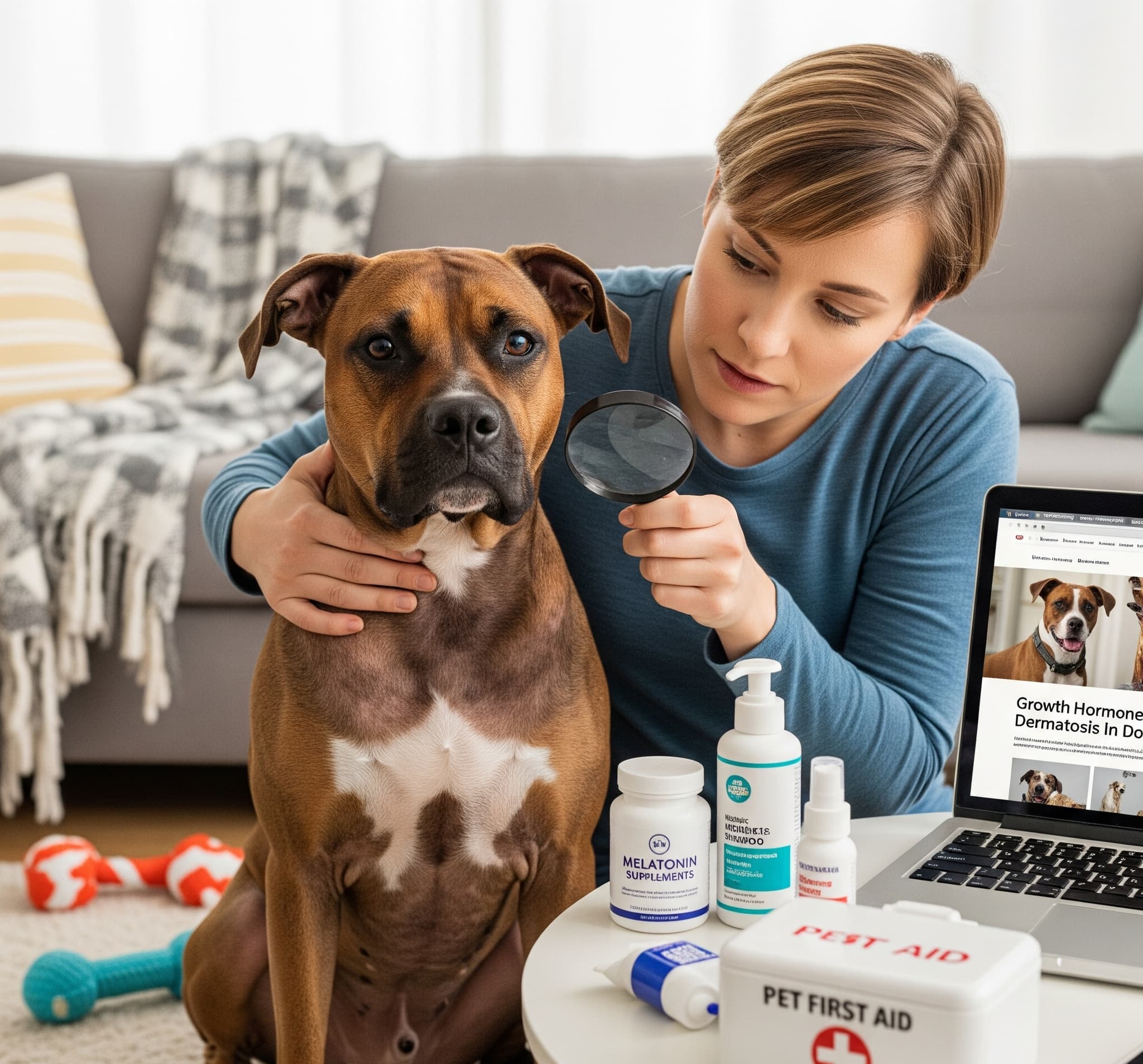New Dog Parents: Spot These 5 Early Lyme Disease Warning Signs
New to dogs? Learn the 5 crucial early Lyme disease signs every first-time owner must know. Simple guide to protect your puppy’s health.
Introduction
Bringing home your first dog is one of life’s most exciting moments. Between choosing the right food, setting up training routines, and puppy-proofing your home, there’s so much to learn as a new dog parent. But one critical skill that could save your furry friend’s life is knowing how to spot the early warning signs of Lyme disease.
As a first-time dog owner, you might worry about missing important health signals. The good news is that recognizing early Lyme disease symptoms doesn’t require years of experience. With just a basic understanding of what to watch for, you can catch this tick-borne illness before it becomes serious.
Lyme disease is more common than many new pet parents realize, especially in certain parts of the country. But when caught early, it’s highly treatable with simple antibiotics. The key is knowing what normal looks like for your dog so you can quickly spot when something changes.
To help you become confident in protecting your new companion, here are the key sections we’ll explore:
- The 5 Most Important Early Warning Signs to Watch For
- Understanding Your Dog’s Normal Behavior Patterns
- Simple Daily Habits That Help You Spot Problems Early
- When to Call Your Vet: Don’t Wait and See Situations
- Prevention Tips Every New Dog Parent Should Know
The 5 Most Important Early Warning Signs to Watch For
Learning these five key symptoms will help you catch Lyme disease early and get your dog the treatment they need quickly.
Sign #1: Lameness or Limping That Comes and Goes This is often the first sign new dog parents notice. Your dog might limp on one leg for a day or two, then seem fine, then limp on a different leg. This shifting lameness is different from an injury, which usually affects the same leg consistently. Watch for reluctance to climb stairs, slower walks, or favoring one side when lying down.
Sign #2: Loss of Energy During Normal Activities Every dog has different energy levels, but you’ll quickly learn what’s normal for yours. If your usually playful pup seems tired during walks they normally enjoy, or if they’re less interested in games and toys, this could signal early illness. New dog parents often think this is just their pet “settling in,” but persistent low energy deserves attention.
Sign #3: Changes in Appetite or Eating Habits Dogs love routine, especially around mealtime. If your dog suddenly shows less excitement about food, eats slower than usual, or leaves food in their bowl, take note. This is especially important for new dog parents to monitor since you’re still learning your pet’s normal eating patterns.
Sign #4: Swollen Lymph Nodes These feel like small, firm bumps under your dog’s skin, usually around the neck, shoulders, or behind the legs. During your regular petting sessions, gently feel along these areas. Swollen lymph nodes often appear before other symptoms become obvious.
Sign #5: Mild Fever or Feeling Warm Your dog might feel warmer than usual to the touch, especially around their ears and nose. They might also seem more tired than normal or seek out cool places to rest. Learning how your dog normally feels will help you notice when their body temperature seems off.
Remember, these signs often appear together rather than alone. One symptom might be normal variation, but multiple symptoms appearing at the same time warrant a vet visit.
Understanding Your Dog’s Normal Behavior Patterns
As a new dog parent, establishing what’s normal for your pet is crucial for early disease detection. Every dog is unique, and spending time learning their patterns will help you spot problems quickly.
Energy levels vary by breed and age, but consistency is key. Some dogs are naturally calm while others are high-energy. Pay attention to when your dog is most active, how long they can play, and what activities they enjoy most. Changes from these established patterns often signal health issues.
Eating habits develop quickly and most dogs become quite predictable around food. Notice how enthusiastically your dog approaches their bowl, how quickly they eat, and whether they finish everything. Dogs who suddenly become picky eaters or show less food motivation need attention.
Sleep patterns are important indicators of health. Most dogs sleep 12-14 hours per day, but the timing varies. Some dogs are morning active while others prefer evenings. Changes in sleep location, restlessness, or excessive sleeping can indicate illness.
Walking and movement patterns become routine within weeks. Your dog will develop preferences for pace, distance, and favorite spots. Subtle changes like walking slower, stopping more frequently, or avoiding stairs might be early illness signs.
Social behavior includes how your dog interacts with family members, other pets, and strangers. Dogs who become withdrawn, less affectionate, or unusually clingy might not be feeling well.
Keep a simple journal during your first few weeks together. Note your dog’s eating times, energy levels, and daily habits. This baseline information will be invaluable for recognizing when something changes.
Simple Daily Habits That Help You Spot Problems Early
Creating easy daily routines helps new dog parents catch health problems before they become serious. These habits require just minutes each day but can make a huge difference.
The morning movement check happens naturally during your first walk of the day. Watch how your dog gets up from bed and takes their first few steps. Healthy dogs move smoothly without stiffness or hesitation. This quick observation takes no extra time but reveals important information about joint comfort.
Mealtime monitoring becomes automatic once you establish the routine. Simply observe your dog’s enthusiasm for food and eating speed. Most dogs develop consistent patterns within days. Changes in appetite often appear before other symptoms, making this an early warning system.
The daily pet session serves multiple purposes beyond bonding. During regular petting or brushing time, gently feel along your dog’s neck, shoulders, and legs for any swelling or sensitivity. This becomes natural within weeks and helps you detect swollen lymph nodes early.
Energy assessment during playtime requires no special effort. Notice if your dog seems as interested in their favorite activities and can play for their usual duration. Reduced enthusiasm for normally loved activities often signals developing illness.
Evening wind-down observation happens while you relax together. Notice if your dog seeks out their normal sleeping spots, seems comfortable settling down, and maintains their usual evening routine. Changes in comfort levels or restlessness can indicate health issues.
These simple habits become second nature quickly and provide continuous health monitoring without stress for you or your dog.
When to Call Your Vet: Don’t Wait and See Situations
New dog parents often wonder when symptoms warrant professional attention versus normal adjustment periods. Here are clear guidelines for when to contact your veterinarian immediately.
Multiple symptoms appearing together always deserve prompt attention. If your dog shows lameness plus appetite loss, or low energy combined with warm feeling, don’t wait to see if it resolves. Early Lyme disease treatment is much more effective than treating advanced cases.
Lameness lasting more than 24 hours or affecting multiple legs over several days needs professional evaluation. While minor injuries might cause temporary limping, persistent or shifting leg problems suggest systemic illness rather than simple trauma.
Complete loss of appetite for more than one meal in an otherwise healthy dog warrants concern. Dogs occasionally skip meals, but refusing food entirely, especially when combined with other symptoms, indicates illness.
Fever or feeling significantly warmer than normal requires same-day veterinary attention. Dogs with Lyme disease can develop serious fevers that need immediate treatment to prevent complications.
Behavior changes that persist beyond a few days should be evaluated professionally. New environments cause temporary adjustment periods, but ongoing personality changes often indicate health problems.
Any breathing difficulties, extreme lethargy, or inability to walk require emergency veterinary care. While these are less common early symptoms, they can indicate serious complications that need immediate treatment.
Don’t hesitate to call your vet’s office with questions. Most veterinary teams are happy to help new pet parents determine if symptoms need immediate attention or can wait for regular appointment scheduling.
Prevention Tips Every New Dog Parent Should Know
Prevention remains your best strategy against Lyme disease. These practical tips are especially important for new dog parents who might not yet understand regional risks and seasonal patterns.
Year-round tick prevention products provide the most reliable protection for your dog. Talk to your veterinarian about monthly preventatives that protect against ticks, fleas, and other parasites. Many products combine multiple protections in one convenient dose, making prevention simple for busy new pet parents.
Daily tick checks after outdoor activities become routine within weeks. Focus on warm areas where ticks prefer to attach: armpits, groin, between toes, and around ears. Removing ticks within 24-48 hours prevents disease transmission, making these quick checks highly effective.
Understanding your local risk levels helps you make informed decisions about prevention intensity. Lyme disease is more common in certain regions and during specific seasons. Your veterinarian can provide local risk information and seasonal guidance for your area.
Safe walking route choices reduce exposure without limiting your dog’s exercise needs. Well-maintained paths and mowed areas have fewer ticks than tall grass or wooded areas. Urban parks often pose lower risks than wilderness trails, especially during peak tick season.
Proper removal techniques are essential knowledge for all dog parents. Use fine-tipped tweezers to grasp ticks close to the skin and pull straight up with steady pressure. Avoid twisting or crushing the tick. Clean the bite area with alcohol and monitor for irritation.
Yard maintenance strategies create safer home environments. Keep grass short, remove leaf piles promptly, and consider professional tick control treatments if you live in high-risk areas. Creating tick-free zones around your home reduces daily exposure risks.
Start these prevention habits immediately, even with young puppies. Building good routines early makes protection automatic and helps ensure your new companion stays healthy throughout their life.
Conclusion
As a new dog parent, learning to recognize early Lyme disease symptoms is one of the most important skills you can develop. The five warning signs we’ve covered – shifting lameness, reduced energy, appetite changes, swollen lymph nodes, and mild fever – are your early warning system for protecting your furry family member.
Remember that becoming attuned to your dog’s normal patterns takes just a few weeks of attention. Once you understand their typical energy levels, eating habits, and daily routines, spotting changes becomes natural and automatic.
The simple daily habits we’ve outlined require no extra time from your busy schedule. These quick observations during normal activities like walks, meals, and playtime provide continuous health monitoring that can catch problems before they become serious.
Most importantly, don’t hesitate to contact your veterinarian when you notice concerning symptoms. Early detection and treatment of Lyme disease are highly successful, often requiring just a simple course of antibiotics when caught quickly.
Trust your instincts as a new dog parent. You know your pet better than anyone, and your careful attention to these early warning signs could save your dog from weeks of discomfort and long-term health complications. When in doubt, always err on the side of caution and consult your veterinary team.
Are you a new dog parent with questions about Lyme disease symptoms? Share your concerns in the comments below, and don’t forget to bookmark this guide for quick reference during your daily routine with your new companion!




Post Comment